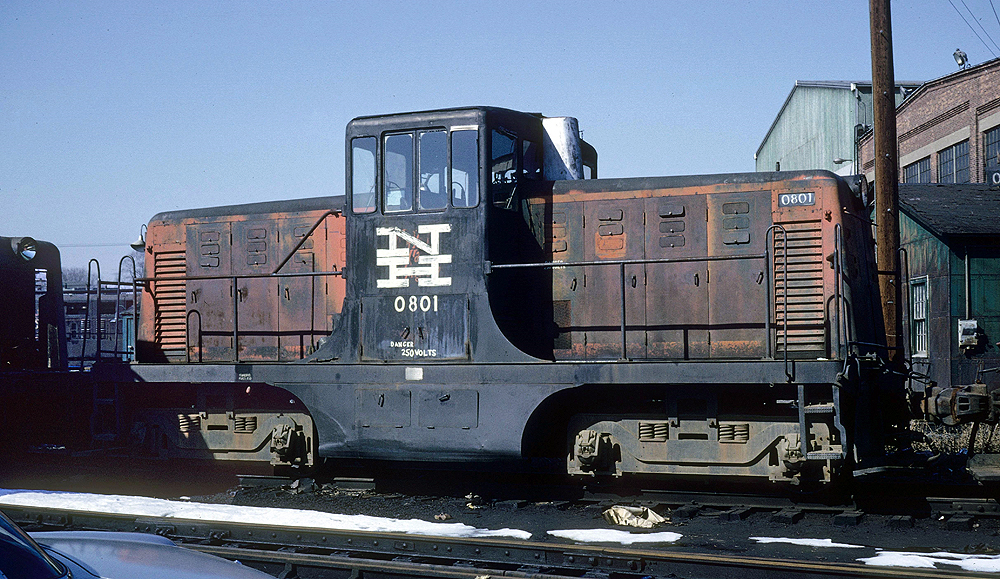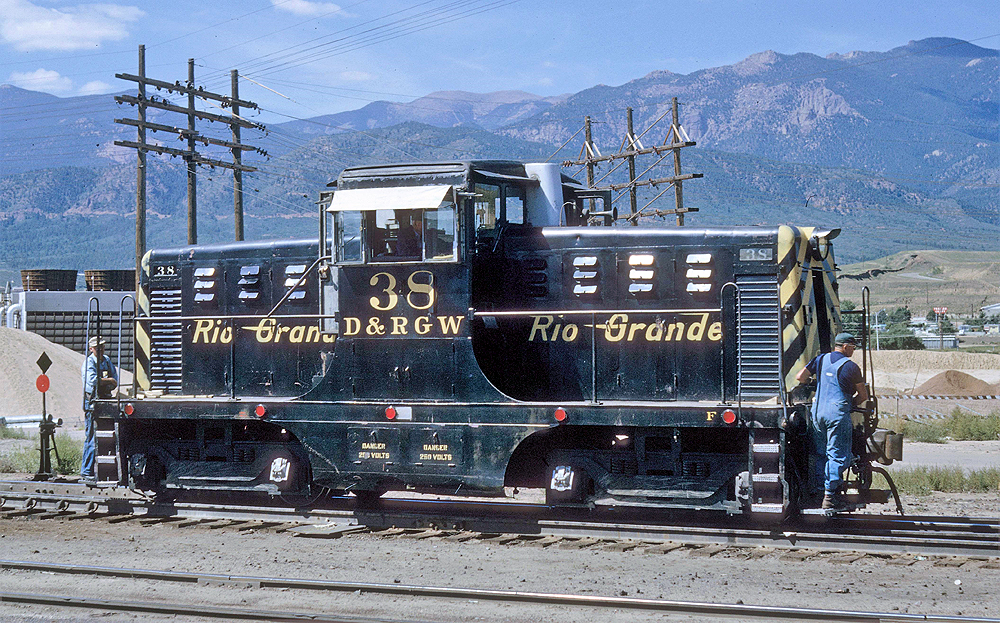
The best-known and most-popular early General Electric locomotives are its 44-ton and 70-ton switching locomotives, both of which found favor among large Class I railroads as well as short lines and industrial users. The GE 44-ton locomotive was significant, as it was the heaviest locomotive that, by operating rules, could be run by an engineer alone without a fireman.
The 44-ton was distinctive and easy to spot, with a center cab and a small diesel engine in each hood. More than 370 were built from 1939 through 1956.
The 44-ton was popular with both industrial users and common carriers, as it skirted just under the rule that a fireman must be used on any diesel 90,000 pounds and heavier. (Davenport and Whitcomb also produced 44-ton models to meet this market.) It used a pair of Caterpillar diesel engines and was rated at 380 or 400 hp. Phase I bodies (through October 1942) had side radiator louvers and a single set of steps on each side — set in from the end. On Phase II models (through May 1943) the louvers moved to the ends, with ladders added at each corner. Phase III (through June 1945) versions have multi-panel access doors on the hoods. Phase IV (through September 1951) engines have small rectangular air intakes at the top of each hood side. Phase V models (through 1956) have ridges in the hood doors and a rectangular headlight (instead of round).
Largest Class I railroad buyers include Atchison, Topeka & Santa Fe (9); Boston & Maine (10); Chicago, Burlington & Quincy (5): Denver & Rio Grande Western (6); Maine Central (7); New York, New Haven & Hartford (19); New York, Ontario & Western (5); Pennsylvania (46); and St. Louis-San Francisco (5).
In early 2023, four nonprofits partnered to restore three GE 44-ton locomotives to operation, using parts from a fourth donor unit.














